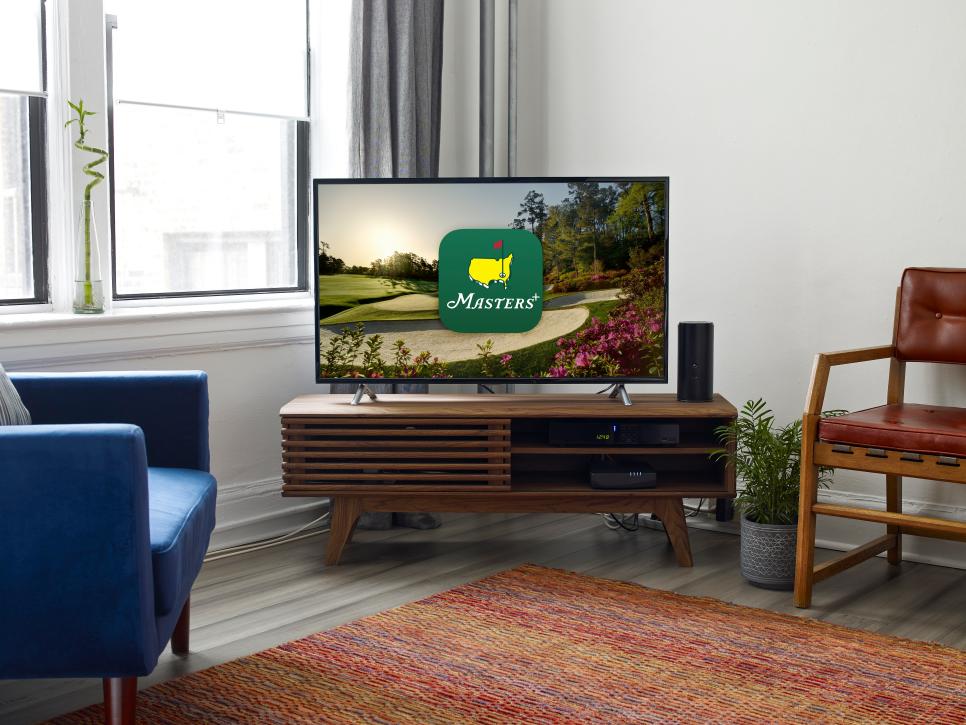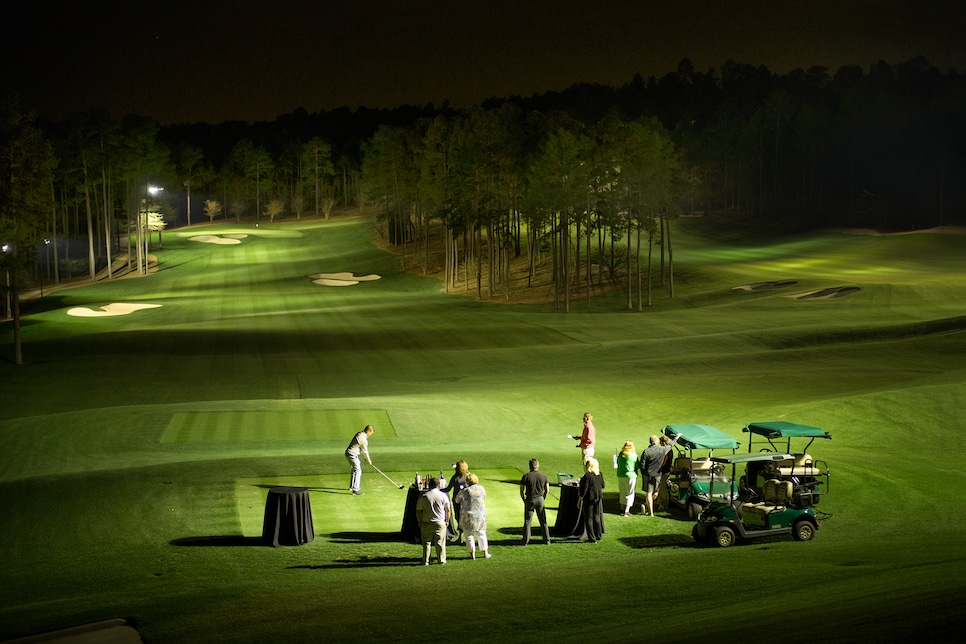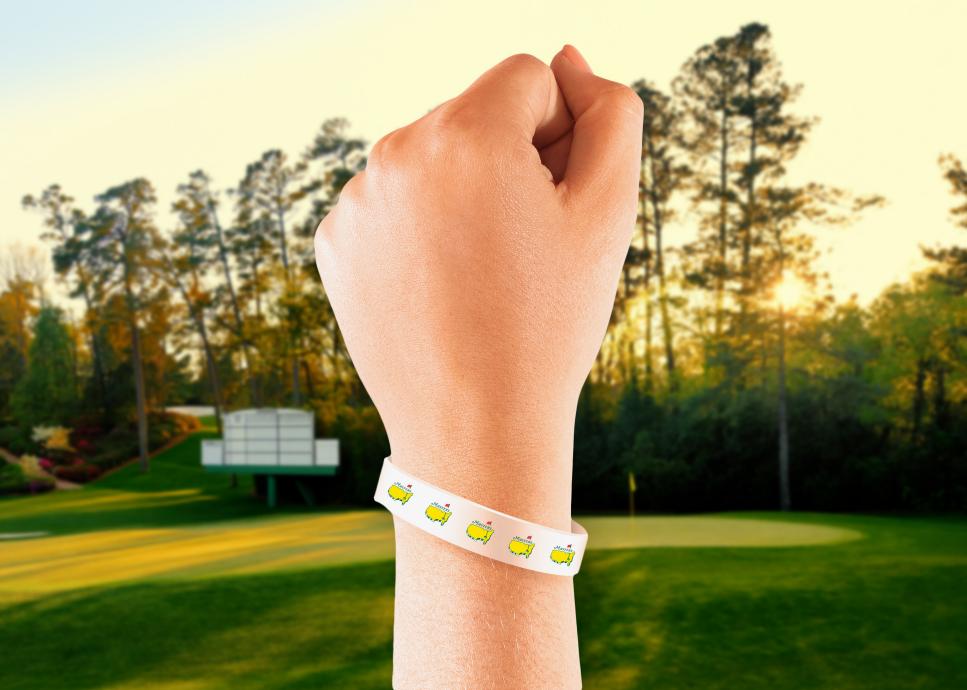The Masters is known for existing in a timeless plane, where tradition is synonymous with the tournament itself.
The dynamic—a dependable, unchanging entity in an ever-changing world—is one of the many reasons the competition is so beloved. But as much as Augusta National honours the past, the club has always been mindful of the future.
The Masters, after all, is the home to many firsts. It was the first 72-hole tournament to be spread across four days. The first tournament to use leader boards and first to implement the over/under scoring system. The first golf event to introduce grandstands and gallery ropes. It was the first tournament to be broadcast on radio, the first broadcast in colour on television, the first to be broadcast in 3D and in 2019 was the first tournament to allow fans to see every shot hit on every hole. And what the Masters hasn’t introduced it has improved, from efforts as advanced as the agronomic methods needed to keep the course in pristine shape to notions as simple as customer service to its patrons.
Which begs the question: Darn-near-perfect as the Masters is, how does the tournament innovate over time?
It is a fun thought experiment, although not the easiest. Augusta National embraces change and imagination but never at the expense of the tournament’s spirit and soul. The Masters is also one of the few entities that does not kneel to commercialism; on the contrary it goes out of its way to cultivate an experience free of the avarice seen at other sporting events. So, to sum up the previous two sentences, don’t expect a hologram Bobby Jones as an Honorary Starter or TPC Scottsdale-like stadium seating around Amen Corner anytime soon.
Still, the tournament has and will continue to evolve. Here’s a sketch of what a futuristic Masters may look like, and we’ve based this on the club’s track record, insight from Augusta National sources, outside speculation, and frankly, our own wish list:
Instant replay enforcement

For all the beauty of broader live coverage, there is a sinister upshot. The more shots shown, the greater chance of rules controversy caught by the viewer that’s not immediately caught by the competitors or competition.
Specifically, there is the reality of the smallest hint of malfeasance being amplified by social media and the consequences of such escalation. The Masters and the folks behind it abhor the thought of distraction in any form, yet there is also pride that the integrity of the tournament has not been called into question—at least with any regularity—like it has at other majors. Which is why the deputisation of rules officials, according to one tournament source, is possibly on the horizon.
The general idea is there would be a command centre or hole-by-hole station monitoring every player and every shot, and if a situation does manifest, a group would be informed of the circumstance immediately and have to come to a decision. As our source explains, self-policing is a tenet of the sport and this is its antithesis. Conversely, the source says, if the players are following the rule book they have nothing to fret.
Virtual reality viewing
From its earliest days, Augusta National and the Masters have been at the forefront of broadcast production.
Despite stasis in engagement and participation on virtual reality sports experiences, there remains an expectation from those in media fields that VR will eventually become more widely adopted as the technology and experience improves and the financial barrier to entry lowers, and with that adoption the Masters should be leading the charge.
One former network senior director familiar with a number of Masters-related VR presentations described the following possibilities for the Masters: “You could be front row on the 12th tee. Then could click over to see what a tee shot looks like just off the green or even from the flag. We weren’t just pitched those shots you’d like to see. My favourite was a view from the veranda of the clubhouse and a bird’s eye from pine trees. One [pitch] session included practice round VR. That way the audience could see the viewing options before the tournament began.”
It should be restated that there needs to be a greater usage of VR for these proposals to come to fruition, yet if you’re looking for the next technological step it’s a pretty logical extension.
Staying in the media realm …

A Masters Channel
To an extent the Masters’ own platforms are already a network, and with cord-cutters becoming a significant market, the tournament’s own digital presence will only grow. Yet there are three reasons, a media source explains, why the Masters’ Every Shot technology has not become a weekly facet of the golf viewing: cost, interest, and a technology-adverse crowd. A little explanation on that third point: Golf’s audience, compared to other professional sports, is an older demographic that doesn’t want to look—and perhaps doesn’t know how to look—for games outside a standard cable package. Which is to say, for the foreseeable future, don’t expect the Masters to depart from its CBS relationship.
But as streaming and subscription services become the norm, there’s a chance the best way to reach an audience a decade from now will not be through a commercial broadcast network but an OTT platform. Maybe that is creating a new relationship with a streamer (more than a few media parties were surprised Augusta National gave Netflix permission to film its new golf reality show at this year’s Masters).
But Augusta National has no issue with cutting out intermediaries—more on this in a second—so don’t be surprised if, eventually, the Masters grows its platforms to a larger scale.
Under the lights?

Okay, this one is just us conjuring up whack ideas, but hear us out: We were part of the lucky few on the grounds for the pandemic-delayed 2020 Masters, and though tournament officials are in no rush to move their rite of spring to fall, the week provided a new prism to view the tournament through. So in that vein … give us Augusta National at night. Could be the Thursday and Friday rounds both have waves that have to play under the floodlights. Maybe bust the high beams out when combatting a weather delay to avoid a Monday finish, or the club adds a men’s amateur event with the women playing in the morning and men in the evening (then switched the following year). As silly as this sounds, just remember Augusta National’s second nine was originally its first.
New playoff routing
The Masters is the only major to use sudden death as its playoff format rather than a two or three-hole aggregate, and on that front don’t expect change. What could change is where the playoff is contested.
In its current format the 18th and 10th holes serve as the playoff cauldrons. While there are no bad holes at Augusta National, there are arguably more dramatic—and unquestionably more famous—options to choose from on the second nine. For years word was Augusta National had no appetite to change the routing due to their proximity to one another along with the belief it was the best, easiest way to manage the patrons who followed. However, there does seem to be an acknowledgment, multiple sources suggest, that a new routing could be more interesting.
Let us hit you with the bad news first: It’s unlikely to involve the 12th or 13th holes. Not only are the holes at a remote part of the course from the clubhouse, both greens are isolated (to varying degrees) from patrons. The tournament’s DNA is fused with its galleries and to have a finish away from them is simply not ideal. What is on the table is a trip to the 15th and 16th holes. They are not terribly far removed from the 18th hole in terms of patron control, they are relatively close to the South Gate entrance/exit and both holes annually produce some of the most memorable shots and loudest sounds of the tournament. There is some hesitation on ending at a par 3, one source says, which we get although counter that a theoretical walk-off ace voiced by Verne Lundquist would be pretty sweet. And should this route be employed there’s also the chance the 17th is added rather than going back-and-forth on the 15th and 16th only. Nevertheless, a new playoff route could be coming.
The Augusta National Hotel

A proposed hotel built and run by Augusta National traces back to the club’s origins and the proposal has re-emerged as a discussion topic as the club continues to purchase land surrounding its property. The believed intention for the (theoretical) project is to house all Masters participants in one place onsite. The “why” depends on who you ask, but the overriding response is to simply make one of the most hectic weeks of a player’s year easier. This is more of an inside baseball topic than anything that pertains to the actual competition, but still … its own hotel! Would be the only time we condone snagging the complimentary shampoo bottle.

Smart bands join badges
One of the club’s vexations is the secondary-ticket market. Chiefly, how some patrons abuse the lottery process. Essentially a person will win the chance to buy a number of badges ($75 for practice round, $115 for tournament day), only to resell those badges for quintuple the price, if not more. One way to combat this issue is complementing the Masters badge with a smart bracelet, similar to those given out at concerts. The bracelet would be linked to a patron’s account, assuring the person who purchased the badge didn’t sell it for personal gain. Or if they did sell it, their accounts would be suspended and the buyer in question is out of luck. These bracelets would also have billing capability, allowing for faster and easier transactions for merchandise and food. Which, frankly, could be problematic; if all that is stopping us from pounding more pimento cheese is waving our wrists at a scanner we’re in trouble.
Masters-only equipment
While we’re on the matter of the future, if you read the tea leaves there’s a chance some sort of equipment rollback or bifurcation is coming from the USGA and R&A. It’s also worth noting Augusta National does not live in its own world and has many members and officials who are integral pieces at the USGA, R&A, PGA of America and PGA Tour. That the club lengthened two more holes this season—with aerials clearing showing the potential for the 13th tee box to move as well—gives merit to the belief we won’t see any meaningful equipment legislation soon.
Augusta National chairman Fred Ridley noted the game is at a crossroads with the distance debate in 2020, stating “I do think that we’re coming closer to a call to action. As it relates to our golf course, we have options and we will take the necessary actions to stay relevant.” But even with its war chest the club can only buy so much land and move so many tee boxes, and continued tinkering could disrupt the philosophies Jones and Alister MacKenzie had in mind when designing the course.
Meaning, the Masters could implement its own local rules for equipment likely targeting the ball and driver to curb distance. It would be extreme and would require the very companies targeted by a local rule producing these Masters-specific products. It would also be a burden on the players to alter their games to equipment they’d use only for four days out of the season. Of course, what’s the alternative: to not play in the Masters? And if any tournament could impose such a rule, it would be here.

